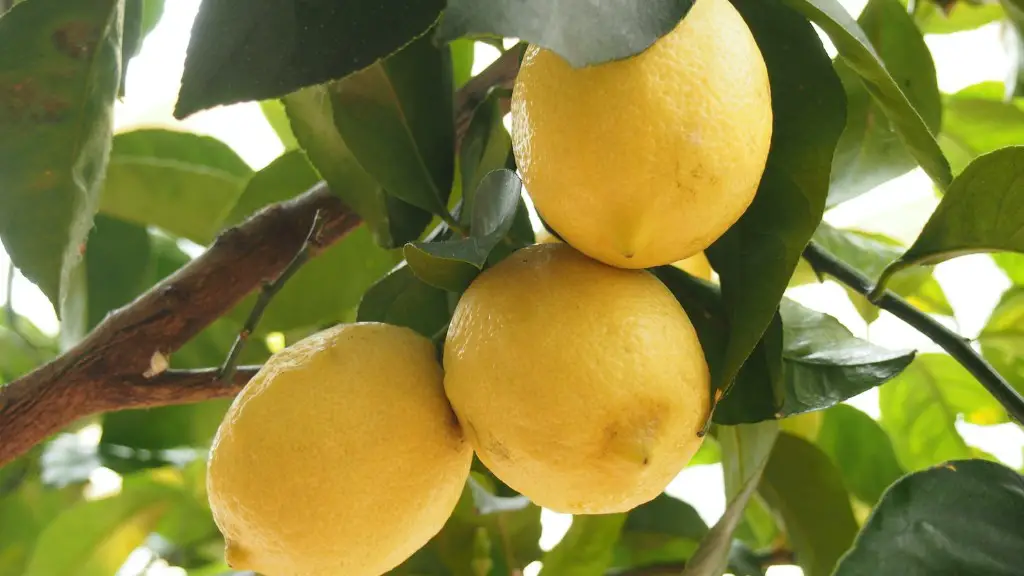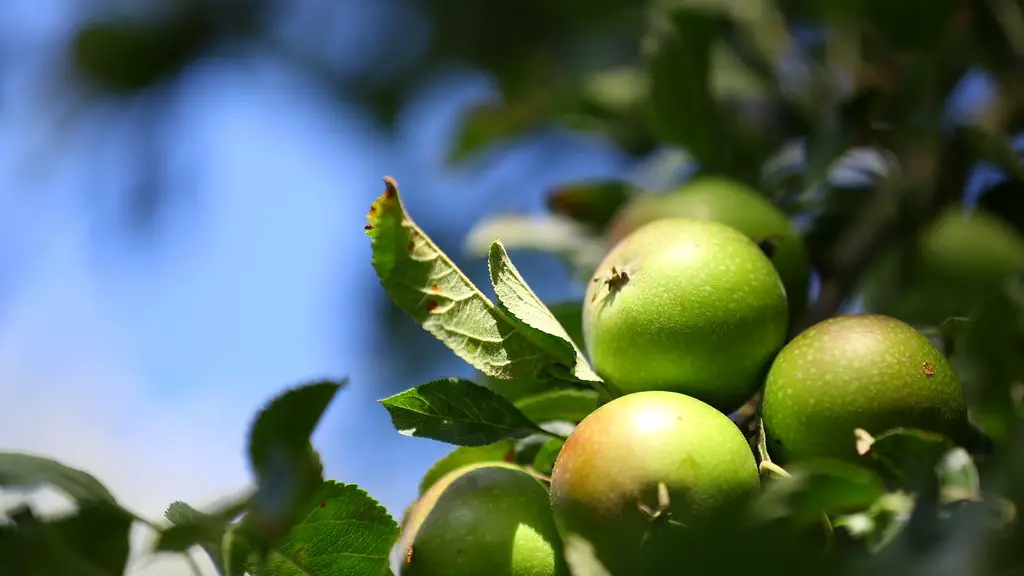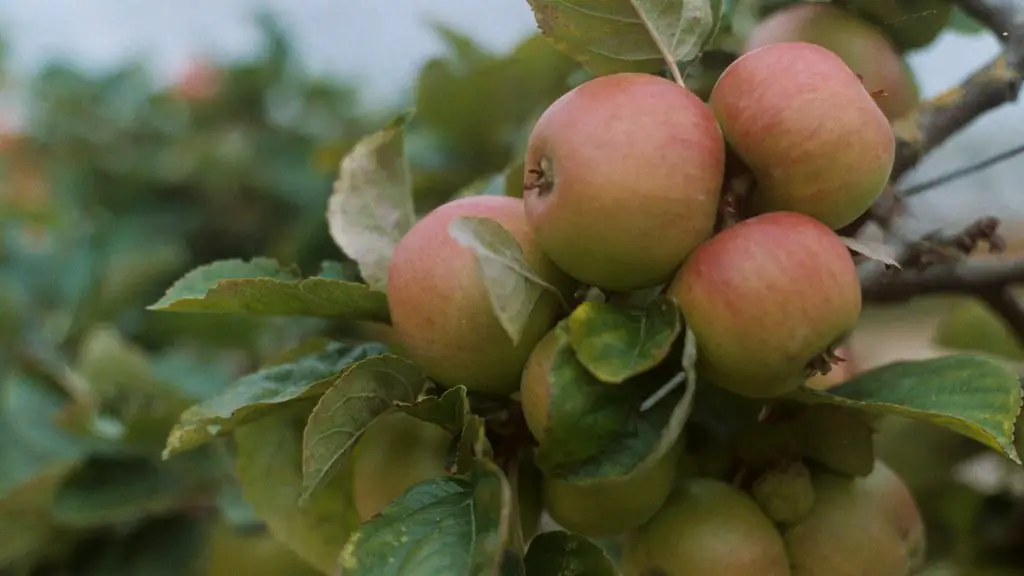You’ve likely heard the expression, ‘When life gives you lemons, make lemonade.’ Growing your own lemon tree can be an enjoyable and satisfying home gardening experience. Before you plant your lemon tree, however, it’s important to consider the right climate and care tips for the most successful results.
Lemon trees do best in warm climates, like the Mediterranean, but can be grown in cooler climates with extra protection. Plant yours in an area that gets full sun and well- draining soil. Prepare the soil with a few inches of organic compost. Dig a hole deep and wide enough that it is two times as wide as the pot and as deep as the root ball. Put a layer of organic compost in the bottom and then set the tree in the hole.
After it’s planted, water gently but thoroughly. To ensure the tree is well hydrated, water two to three times each week for the first few weeks of growth and then adjust the frequency of your watering schedule with the season. Increase water during the warmer months and decrease in the winter. Do not over water as this can cause root rot.
Lemon trees also require fertilizing to support strong growth and regular fruiting. Only fertilize actively growing, healthy trees to prevent severe damage. Natural and organic options are available, just make sure they are appropriate for citrus or have a nitrogen-rich blend. Fertilize trees in the spring and again in the summer.
You’ll also need to prune your lemon tree regularly. Pruning is necessary to maintain its shape and stimulate new growth, but be careful to not remove too much at once. Cut away just a few of the branches at a time, with pruning shears, and remove any that are dead, diseased, or that are growing in the wrong direction altogether.
With regular watering, fertilizing and pruning, your lemon tree should produce fruit in a few years or less. And you can use the zesty lemons to make your own homemade lemonade. Enjoy your backyard lemonade stand year-round and relish in knowing that it all started with a simple lemon tree planted in your yard.
How to Tell if a Lemon Tree is Mature
Knowing when your lemon tree has matured is an important step in the process of gauging how productive it will be. For a lemon tree to reach maturity and become fruit bearing it needs to be between three to five years old. If planted from seed, however, the timeline may be much longer. Lemon trees grown from seed can take up to eight years or more before they bear fruit.
It’s also important to check for signs of maturity when determining if your tree is ready for harvest. The first sign of maturity is leaf and branch growth. A mature lemon tree should have dark green, waxy and leathery leaves. If the tree has fewer flowers and small leaves, it’s likely not mature. And if it doesn’t have thorns, it probably isn’t mature yet.
Finally, check the size and shape of your tree’s fruit. The fruit should be plump and juicy with bright yellow skin. That said, keep in mind that even if you have a mature tree, it still could take a few years before the tree starts to produce a meaningful amount of fruit.
Benefits of Having a Lemon Tree
Aside from the fact that you can make your own homemade lemonade, there are many other benefits to having your own lemon tree. Lemons are incredibly nutritious and can help protect against several diseases. They are packed with vitamin C, antioxidant flavonoids and dietary fibers, as well as citric acid and nutrients such as potassium, magnesium, and copper.
Their health benefits are plentiful and include improved digestion, weight loss, lowered risk of cancer and improved skin health. Plus, they have antibacterial and antiviral properties that can help fight off infections and boost your immunity.
Aside from its health benefits, the aesthetic appeal of growing a lemon tree should not be overlooked. Lemons are beautiful, and the tree itself can be an eye-catching addition to your yard or patio. Finally, because a lemon tree can bear fruit for up to 10 years, you’ll have a consistent supply of lemons for years to come.
Tips to Grow a Lemon Tree
Growing a lemon tree requires patience, but with some attention and effort, you’ll eventually be rewarded with a bountiful harvest if you follow a few tips. First, it’s important to select a tree with a strong root system. To ensure it won’t topple under the weight of the fruit, look for a tree with a central trunk and evenly spaced branches. Since a lemon tree typically produces fruit for about seven to nine years, opt for an older tree if you want an immediate harvest.
Before planting your lemon tree, it’s also important to select the right pot. The pot should be large enough to cover the entire root system and have drainage holes. Copper or ceramic pots work best. To make sure the lemons aren’t difficult to pluck off the tree, avoid ceramic pots with a shiny surface, as it can make the fruit harder to remove.
Finally, you’ll need to make sure the tree receives enough light and warmth. Place it in an area with direct sunlight and make sure the temperature is between 50 and 95 degrees Fahrenheit. If you take proper care, your lemon tree will be a major source of joy for years.
When to Harvest Lemons
Know when to harvest the lemons is a critical step in the process of successful lemon harvesting. The tree should be of a mature age and the lemons should be of a decent size and their rind should feel slightly thick and firm when squeezed gently. Lemons are ripe when they are firmly yellow, as opposed to green or orange.
When harvesting lemons, it’s important to use a pair of pruning shears in order to avoid causing damage to the tree. Begin by cutting the rind and then pull the fruit off the tree. Don’t forget to check the fruit for any larva or bug infestation and dispose of it, if found.
Also, when harvesting lemons, it’s important to avoid harvesting too many at once. This can reduce the overall fruit production from the tree. If you do end up harvesting too much, make sure to get rid of it before it starts to rot and affects the other fruit on the tree.
How to Store Lemon Tree Fruit
Once the lemons are harvested, you’ll need to store them in a cool, dark place. The ideal temperature for storing lemons is between 45 and 50 degrees Fahrenheit. If you have extra lemons, put them in an airtight bag and store them in the refrigerator and they’ll last up to two weeks.
Lemons can also be frozen, either whole or juiced. To freeze the whole lemons, wash and dry them and store in an airtight container. To freeze lemon juice, fill an ice cube tray nearly full and add a teaspoon of sugar to help preserve the juice. Then, simply pop the cubes out and store them in a freezer bag for later use.
Another storage option is to dry the lemon peels. Scrub the lemons, slice off the peel and then dry it in the oven or out in the sun. Once dry, store the peels in an airtight container for use in tea or baking.
No matter how you choose to store your lemon tree’s fruit, you future self will surely be thankful you took the time to do so. Enjoy the sweet rewards of growing your own lemon tree!





